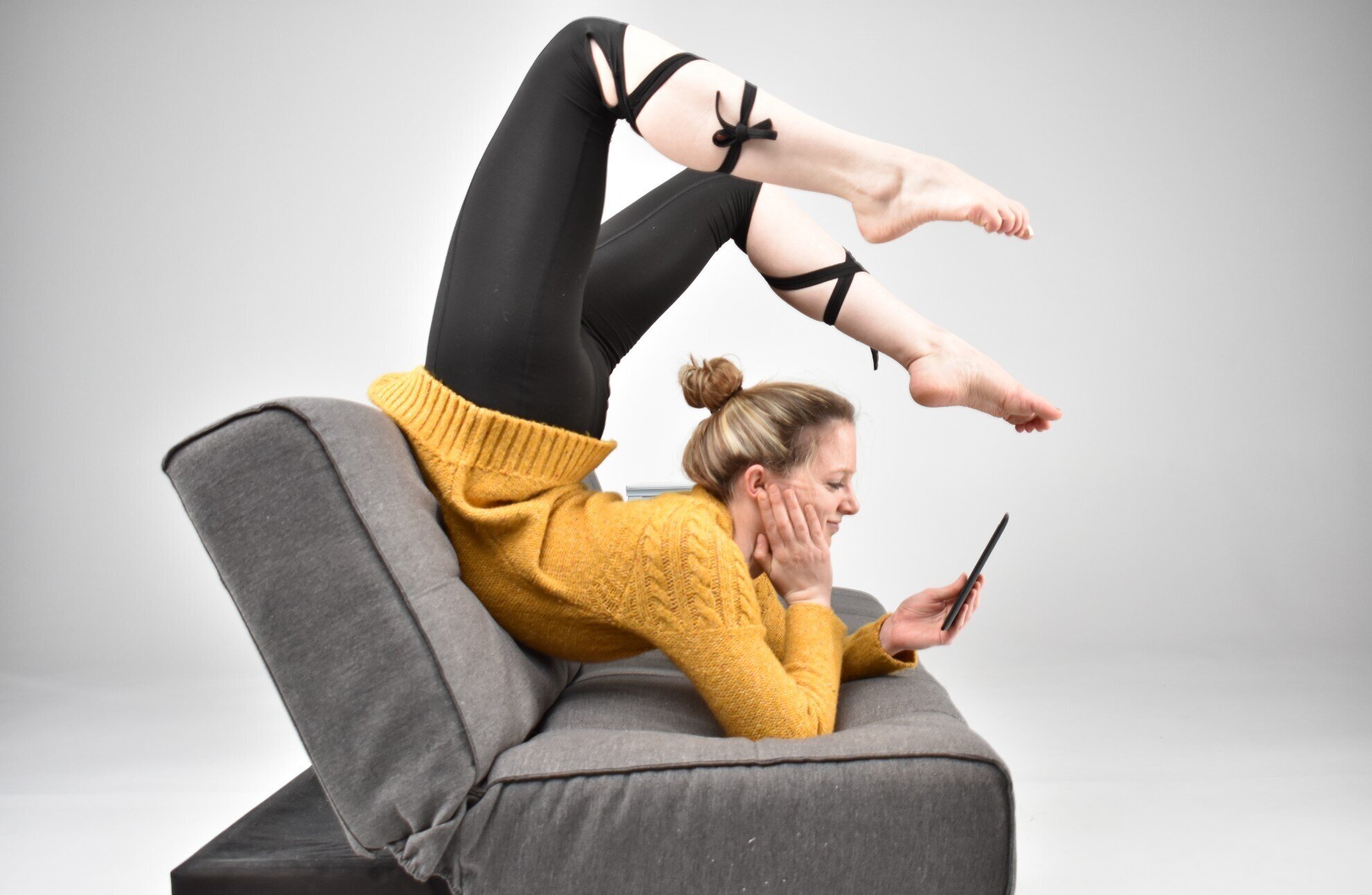TIPS, TRICKS & HOW-TOs
The Bendy Blog: Flexibility Training Articles
Filter posts by topic:
All Posts / Bridges / Contortion / Front Splits / General Back Flexibility / General Flexibility Tips / General Lower Body Flexibility / Middle Splits / Neurodynamics / Shoulders / Straddles / Yoga /
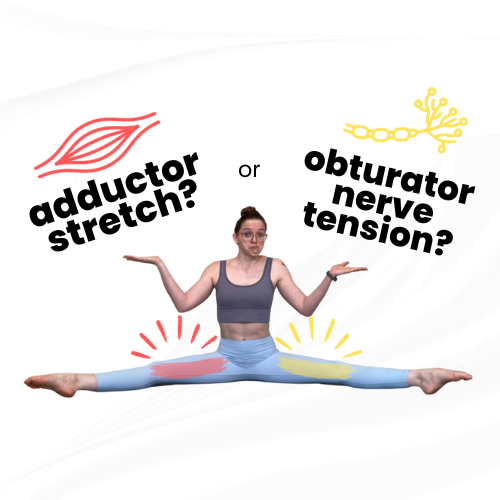
Obturator Nerve Tension Test & Nerve Glide
Obturator nerve tension refers to a situation where the obturator nerve, one of the main nerves that goes through our inner thighs, is prevented from sliding like it’s normally supposed to and instead tugged into a position of too-much-tension when we try to stretch our adductors (inner thigh muscles). This can be tricky because it may feel a whole lot like muscle tightness, so it’s important to be able to recognize whether the inner thigh “tightness” or “stretching” sensation you are feeling is actually a muscle stretch (good!) or nerve tension (probably less productive) - so let’s talk about how to figure that out!

Help! My Outer Hips Hurt When I Straddle
Straddles, like middle splits, are mainly meant to stretch your adductors (inner thigh muscles) and/or your hamstrings if you’re taking it into a straddle pancake forward fold - so if you’re feeling pain or discomfort in the outside of your hips, and not a stretching sensation on your inner thighs, something needs to change!
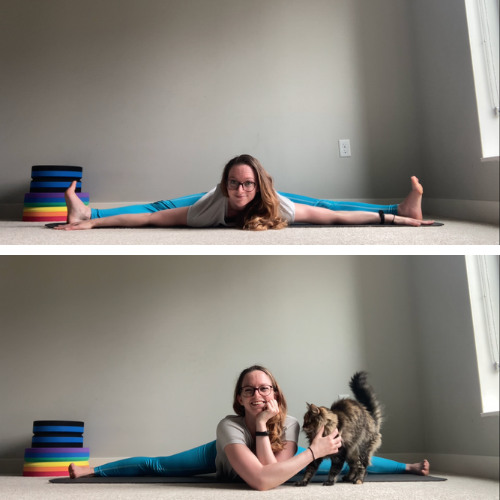
Straddle vs. Middle Split - What’s the Difference?
Having dabbled in the wide world of contortion training for 11+ years now, I’ve come to learn that there are some serious inconsistencies in naming conventions for stretches/poses. But when it comes to straddles and middle splits, all instructors can agree that these are distinctly different poses. Why does that matter to you? It influences what muscles you need to train to be able to do them, and informs the “proper” form for safely working on your hip flexibility for these shapes.

How To: Active Straddle Hover
“Straddle hovers” are one of my favorite exercises for active straddle flexibility - not only do they super strengthen your hamstrings, they also make you feel like Jean Claude Van Damme doing an epic split between between two semi trucks.
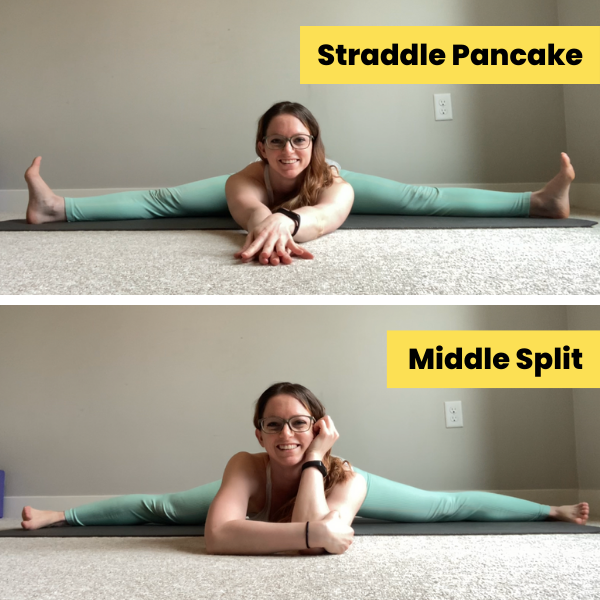
10-Minute Middle Split & Straddle Routine
This post is a long overdue follow up to my 10 Minute Front Splits Routine post from a couple of years ago. Below is a nice short stretching routine that’s a great foundation for working on your straddles and middle splits. Because both straddles and middle splits require inner thigh flexibility (quite a bit) and hamstring flexibility (straddle pancakes require a lot, middle splits just a little) - it’s helpful to work on them both at the same time.
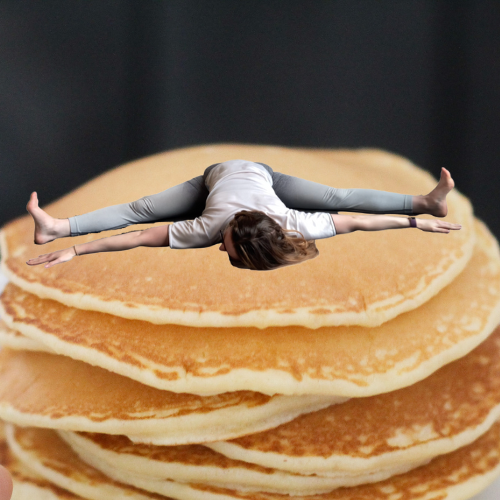
6 Active Flexibility Drills for Your Straddle Pancake
Looking to embody a flatter flapjack in your straddle pancake stretch? A straddle “pancake” (forward fold) requires a combination of inner thigh flexibility (to widen your straddle) and hamstring flexibility (to fold forwards). This post will specifically focus on active flexibility drills to strengthen our hamstrings and hip flexors to support a deeper wide-legged forward fold.

Contract-Relax Stretches for Middle Splits
Contract-relax style stretching is a common (and effective!) type of active flexibility training. As someone who struggled with middle splits for a long time, I really enjoy the difference in comfort I can feel after doing some contract-relax work - hopefully you notice a difference as well!
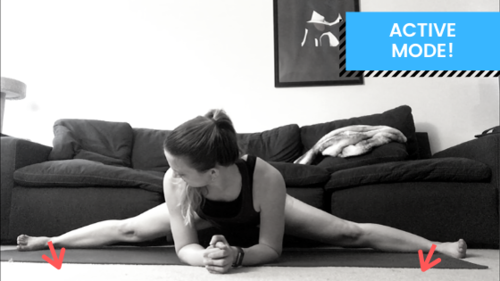
PNF Stretching at Home: Middle Splits
If you’re working to get your middle splits but your stretching routine only consists of doing a middle split and holding it for 5 minutes, it’s going to take you ages to get your hips to the ground. Instead of endlessly passively stretching your hips, add in a little active flexibility work each practice to teach your body to overcome the stretch reflex.

Active Straddle Warmup: Pancake Good Mornings
This is favorite warm up by far for straddles and middle splits. Straddle pancake good mornings can be done with body weight as part of your skill-specific warm up routine, or with heavier weights (dumbbells, weighted plates, etc) as a conditioning exercise later in your practice.

